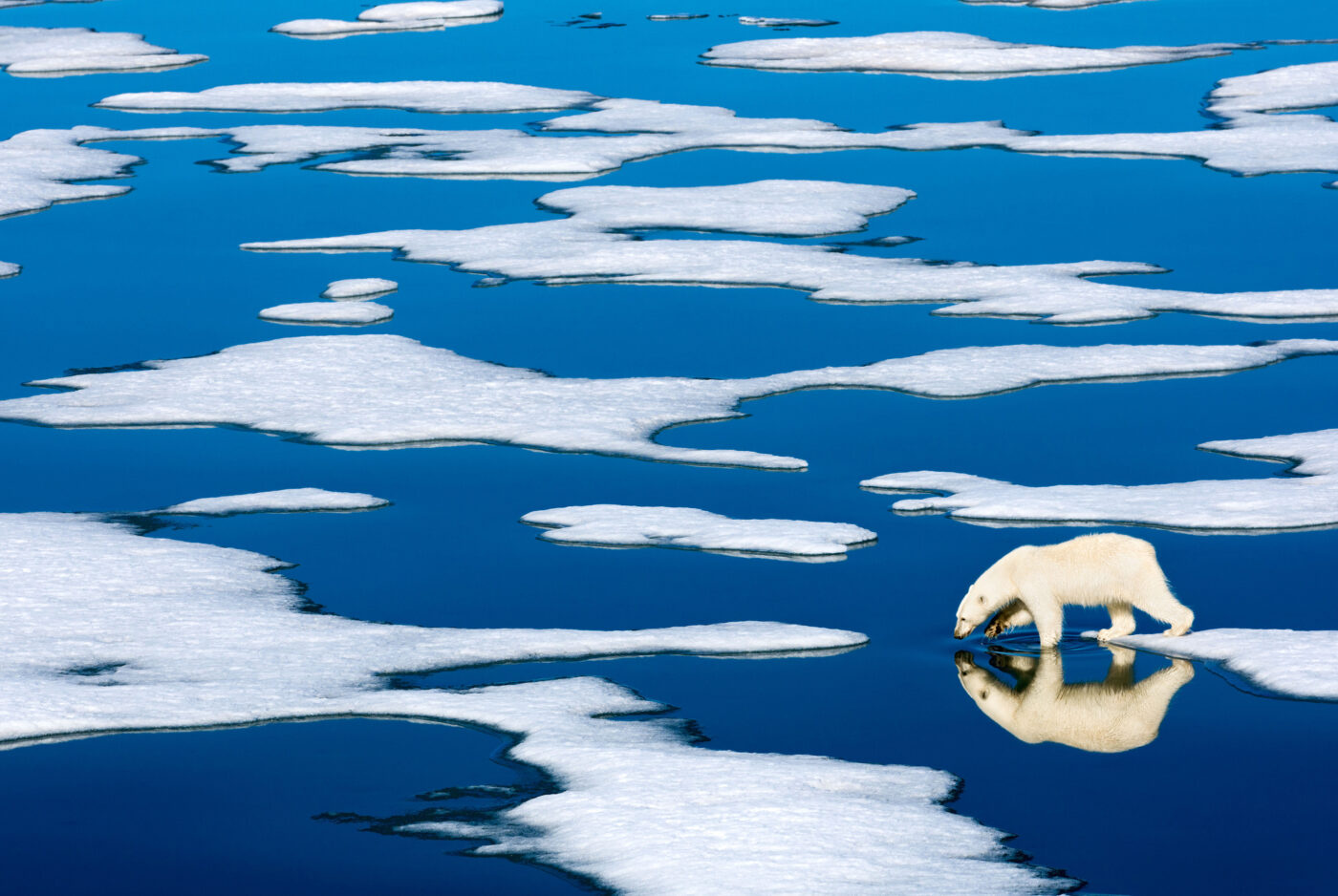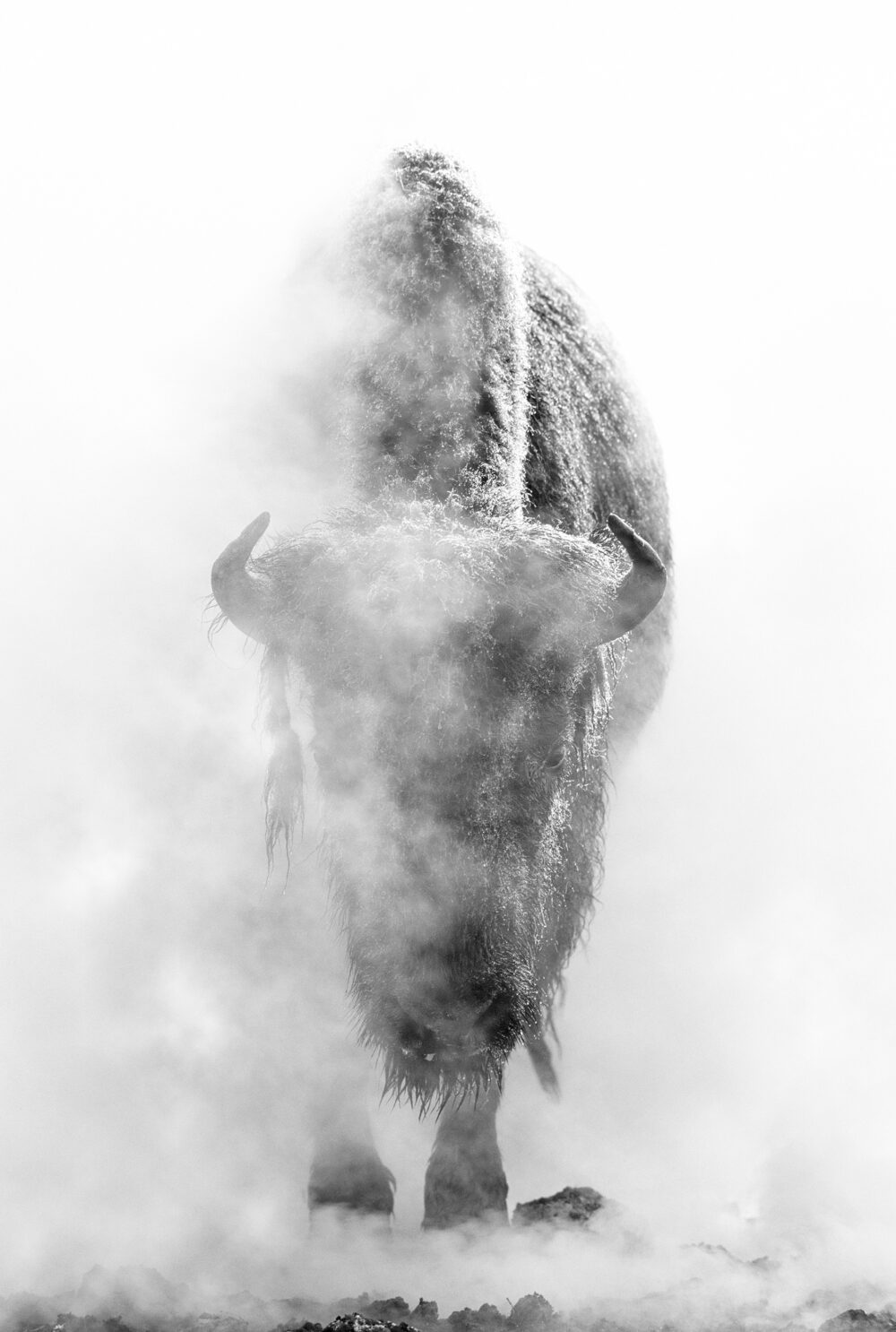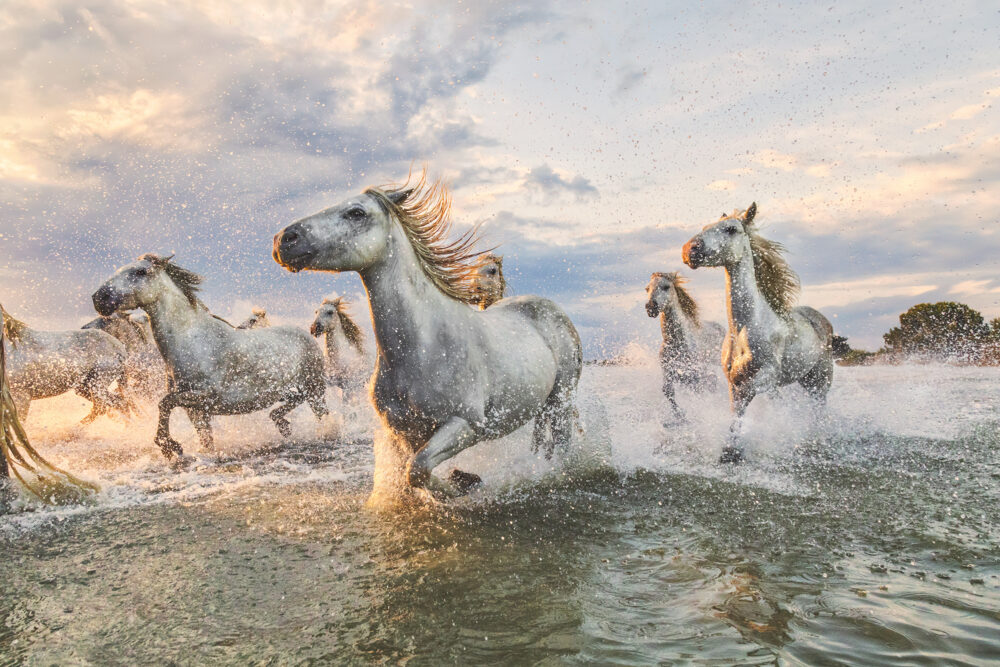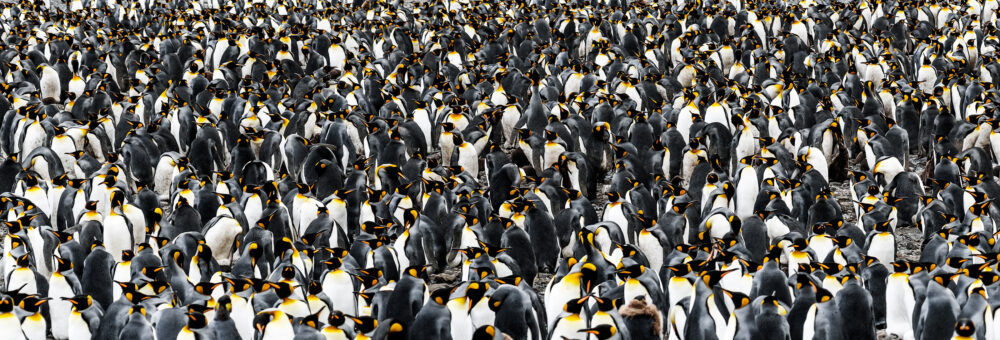It was a magical day with blue sky, no wind, and beautiful patterned ice – a photographer’s dream. The only element missing was for a polar bear – icon of the far north – to come into view.
The National Geographic Explorer was exploring a remote fjord along the coast of Spitsbergen almost 80˚north in the high arctic archipelago of Svalbard, Norway. This was an expedition to the Land of the Ice Bears. It had been foggy for days, difficult conditions for navigating through the ice and spotting wildlife. We had yet to see a polar bear.
Finally, the weather broke. Searching with spotting scopes, binoculars, and long telephoto lenses, at last we spotted a couple of polar bears on the ice in the distance. The ship pushed into the ice, moving slowly forward forward before stopping. Wildlife photography is a waiting game, requiring patience.
Out of range for good photos, we watched and waited as one of the bears slowly and deliberately approach the ship, sometimes jumping between ice floes. By nature, polar bears are curious, driven by there continual search for food under the midnight sun, during the endless days of summer when the sun never sets.
This image was part of a series of frames, a quiet moment when the bear paused before walking slowly and rippling the shallow water between the patterned sea ice. Moments like this are rare and etched into my memory forever. It’s what I live for as a photographer.
Location: Svalbard, Norway
Photograph Date: 2010
Medium: Chromogenic Print
Edition: 200



